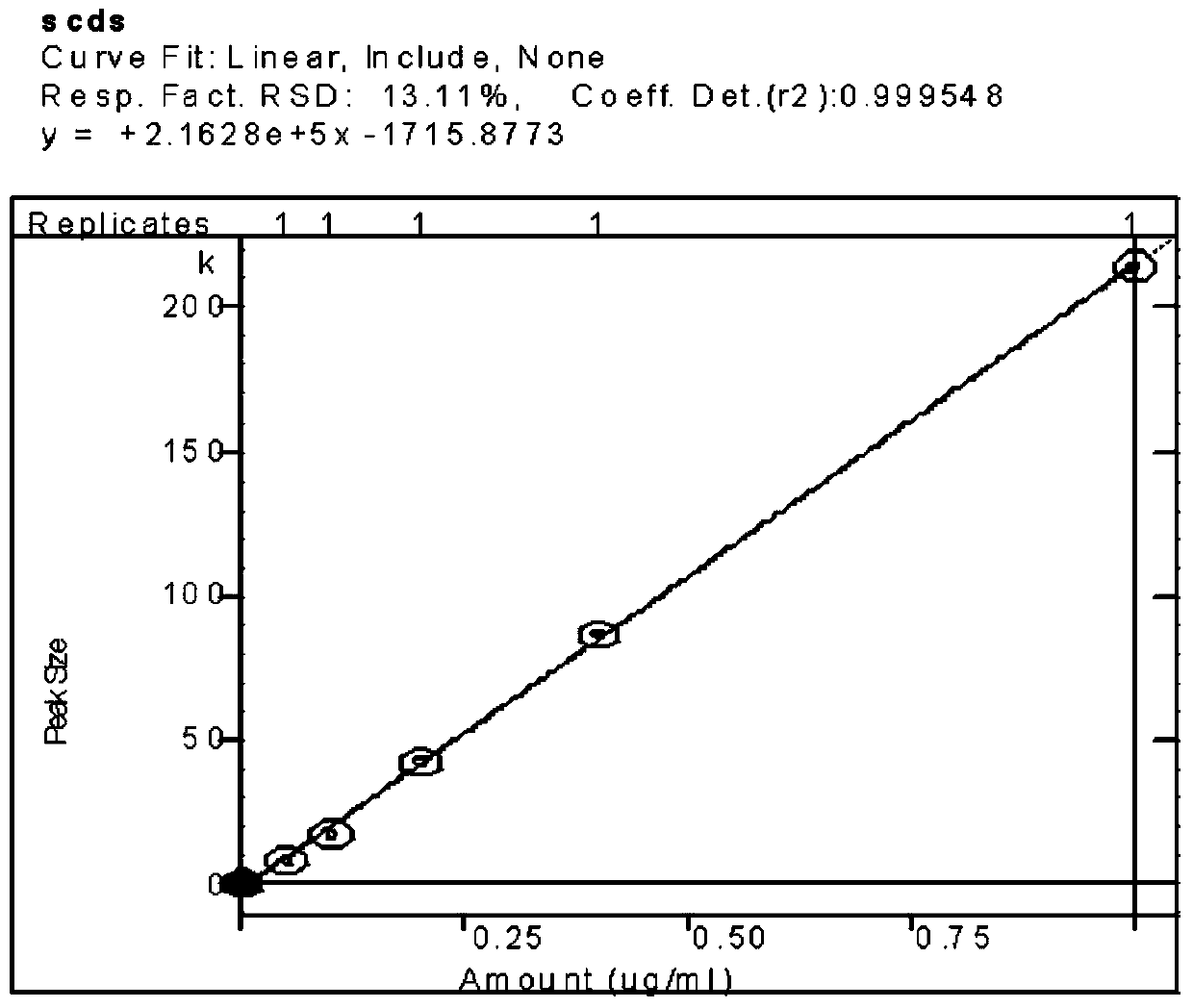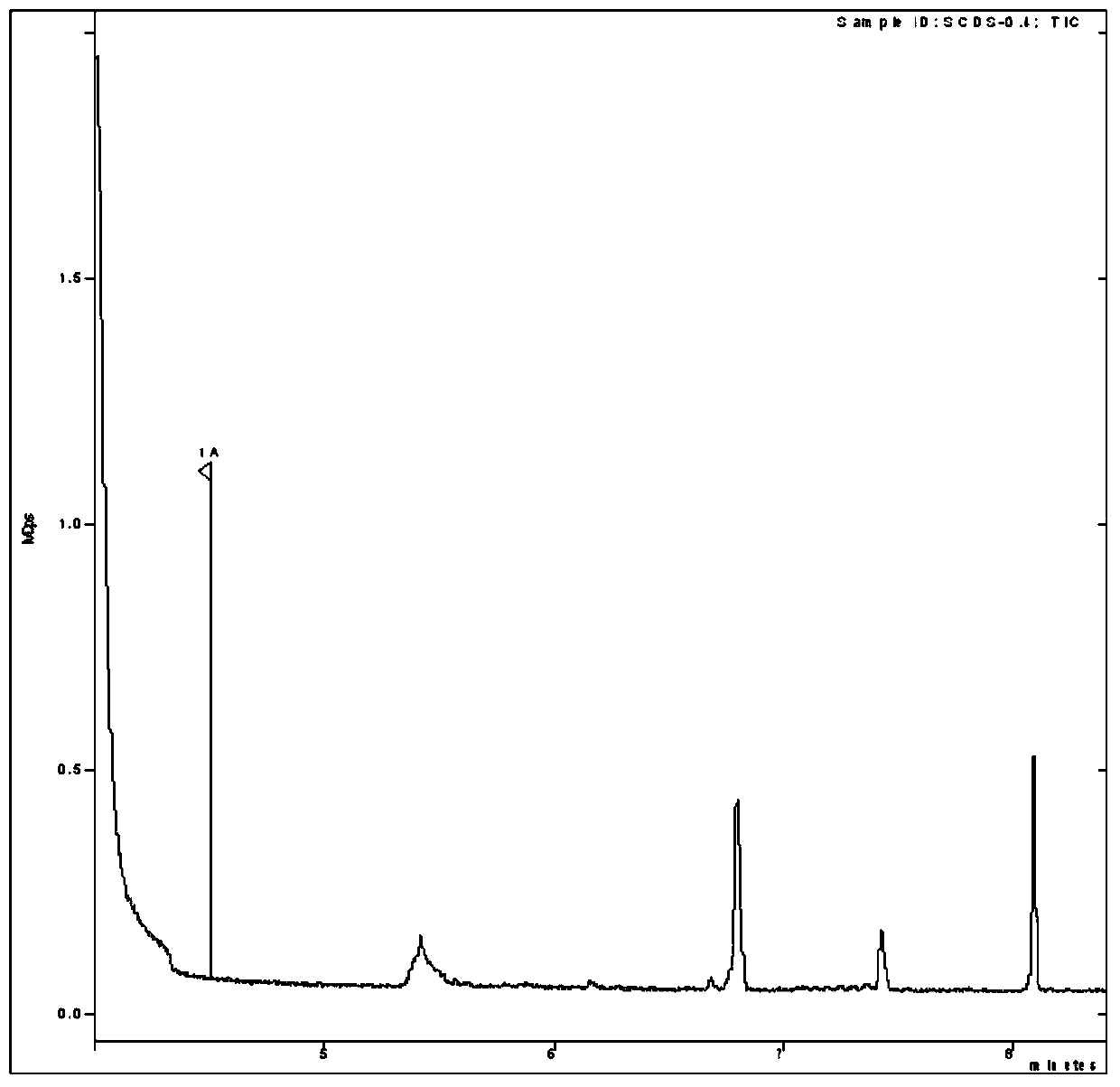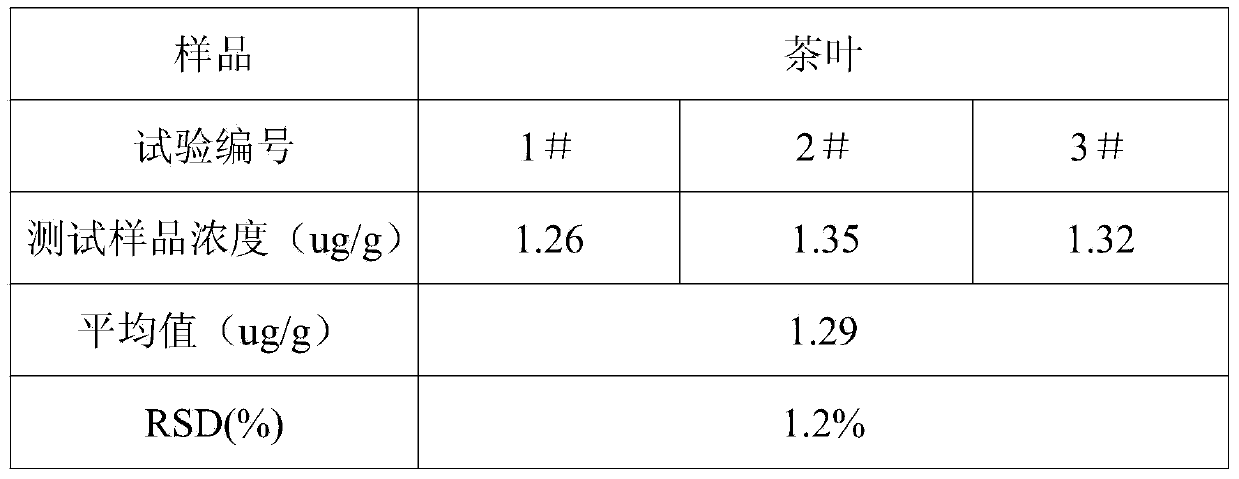Method for detecting dimehypo in tea leaves
A detection method and a technique for dimethoside are applied in the field of detecting dimethoate in tea, and can solve the problems of poor stability and low sensitivity, etc.
- Summary
- Abstract
- Description
- Claims
- Application Information
AI Technical Summary
Problems solved by technology
Method used
Image
Examples
Embodiment 1
[0012] Embodiment 1, standard curve
[0013] Nereistoxin standard solution: 100ug / mL, take the standard solution and dilute it with chromatographic grade methanol to prepare 0.05, 0.1, 0.2, 0.4, 1.0ug / mL standard series.
[0014] Instrument used: Brukerscion436-GC, GC-MS chromatographic conditions are: ion source: EI; column type: BR-1ms; inlet temperature: 280°C; column flow rate: 1.0mL / min; Keep at 60°C for 2 minutes, raise to 180°C at a rate of 20°C / min, then rise to 260°C at a rate of 10°C / min, then rise to 280°C at a rate of 30°C / min and hold for 10 minutes; Quantitative ion: 70.0; Qualifier ions: 71.2, 149.1, 56.3; transfer line temperature: 270°C, EI source temperature: 220°C; injection volume: 1ul.
[0015] figure 1 Be the standard curve figure of the dimehypo measured by the present invention, the ordinate in this graph represents the response value of the gas chromatography peak area, and the abscissa represents the concentration of dimehypo; figure 1 It can be se...
PUM
 Login to View More
Login to View More Abstract
Description
Claims
Application Information
 Login to View More
Login to View More - R&D
- Intellectual Property
- Life Sciences
- Materials
- Tech Scout
- Unparalleled Data Quality
- Higher Quality Content
- 60% Fewer Hallucinations
Browse by: Latest US Patents, China's latest patents, Technical Efficacy Thesaurus, Application Domain, Technology Topic, Popular Technical Reports.
© 2025 PatSnap. All rights reserved.Legal|Privacy policy|Modern Slavery Act Transparency Statement|Sitemap|About US| Contact US: help@patsnap.com



